I did jesnor peeling. After peeling, complications began 2 days later - a rash. On the 3rd day I went to the dermalogist at the clinic, the doctor said that dermatitis had begun. I prescribed Metrogyl, Advantan.
Before peeling, I never had any acne on my face, my skin was perfect. I decided to try medium peeling. Day 5 I’m sitting at home and applying ointments. The rash is as it was. It feels like it will never go away. Tell me who has been in this situation. Will the rash go away or will I now walk around like this for the rest of my life?
Woman.ru experts
Find out the opinion of an expert on your topic
Kostenich Lyudmila StanislavovnaPsychologist, Art therapist. Specialist from the site b17.ru
Marina Aleksandrovna BaydyukPsychologist, Analytical psychologist. Specialist from the site b17.ru
Valeria Bertnik-YuryevaPsychologist, Psychologist-guide. Specialist from the site b17.ru
Pukemova OlgaPsychologist. Specialist from the site b17.ru
Nevzorova Sofya IgorevnaPsychologist. Specialist from the site b17.ru
Alina SysoevaPsychologist, Coach and Trainer. Specialist from the site b17.ru
Juran Marina VladimirovnaPsychologist, Family child psychologist. Specialist from the site b17.ru
Ekaterina Alekseevna VasyukhinaPsychologist, Crisis counseling. Specialist from the site b17.ru
Spiridonova Nadezhda ViktorovnaPsychologist. Specialist from the site b17.ru
Vera Vladimirovna ZolotykhPsychologist. Specialist from the site b17.ru
Dermatitis after such a “vigorous” peeling is a completely normal skin reaction, didn’t your cosmetologist tell you?) I also did this peeling a few days ago, I was also very scared, there was a terrible rash, redness, burning and itching, but as it peeled, all this disgrace will go away) don’t worry! I smear my skin with SesDerma silicone cream, it’s still peeling, then with my usual cream, also of this brand.
Dermatitis after such a “vigorous” peeling is a completely normal skin reaction, didn’t your cosmetologist tell you?) I also did this peeling a few days ago, I was also very scared, there was a terrible rash, redness, burning and itching, but as it peeled, all this disgrace will go away) don’t worry! I smear my skin with SesDerma silicone cream, it’s still peeling, then with my usual cream, also of this brand.
Plus the girl who wrote above) the cosmetologist also told me that the rash is a normal reaction. And all these pimples will pass (and in fact did) faster than ordinary rashes
After this peeling, I didn’t have a rash, but straight pimples. I started crying then(((I also had to go to work with such a face. The dermatitis will go away, of course, but as soon as I would like
Plus the girl who wrote above) the cosmetologist also told me that the rash is a normal reaction. And all these pimples will pass (and in fact did) faster than ordinary rashes
How many days have passed?
After this peeling, I didn’t have a rash, but straight pimples. I started crying then(((I also had to go to work with such a face. The dermatitis will go away, of course, but as soon as I would like
Related topics
I’m already on the fifth day after peeling, there is a little redness, but there is no rash anymore, it’s better not to use foundation while the skin is peeling and in this condition, but I use powder, after washing it’s better to use paper towels, regular ones itchy even more.
This is absolutely necessary. Dermatitis has never been a normal reaction. Cosmetologists are people without special education after some courses from the plow. There is no need to rely on their advice. And the benefits of peeling are very doubtful. I recommend reading something on this topic
There are also cosmetologists with medical education, they take working with the skin seriously, they recommend taking tests and contacting a gynecologist first, because the skin is a reflection of internal problems, so external influence alone is not enough. But it is also true that peelings can cause harm, the top layer of skin becomes thinner, severe dryness appears, so an adequate cosmetologist will not recommend getting carried away with peelings. I’ve done laser resurfacing before, the result is good, but deeper skin unevenness remains, I decided to try peeling, my complexion has become much more even, this is a fact, before I couldn’t go outside without foundation, now I don’t use it, but the downside is that my skin “dry” you will have to pierce it with hyaluronic acid.
Completed the course - now you are a cosmetologist! I don’t go to people like that - it’s fraught. I have been going to cosmetologist Liliya Leshchinskaya at the Center for Beauty and Cosmetology of the 21st Century for a long time now. I do peelings all the time, and believe me, they are stronger than Jessnor. The skin peels off quickly if you actively moisturize. There shouldn't be any of the reactions you describe.
I recently read about a similar problem. The allergy is gone. Take Diazolin. And polysorb. It removes allergens from the body and the skin will feel better after it.
Drink Polysorb to completely remove the allergen. It is very effective, I recommend it. Apply fenistil. And also a cream for dryness and general hydration La Cree.
I did jesnor peeling. After peeling, complications began 2 days later - a rash. On the 3rd day I went to the dermalogist at the clinic, the doctor said that dermatitis had begun. I prescribed Metrogyl, Advantan.
Before peeling, I never had any acne on my face, my skin was perfect. I decided to try medium peeling. Day 5 I’m sitting at home and applying ointments. The rash is as it was. It feels like it will never go away. Tell me who has been in this situation. Will the rash go away or will I now walk around like this for the rest of my life?
Drink Polysorb to completely remove the allergen. It is very effective, I recommend it. Apply fenistil. And also a cream for dryness and general hydration La Cree.
Complaint
Moderator, please note that the text contains:
The complaint has been sent to the moderator
The page will close automatically
in 5 seconds
Forum: beauty
New for today
Popular today
The user of the Woman.ru website understands and accepts that he is fully responsible for all materials partially or fully published by him using the Woman.ru service.
The user of the Woman.ru website guarantees that the placement of materials submitted by him does not violate the rights of third parties (including, but not limited to copyrights), and does not damage their honor and dignity.
The user of the Woman.ru site, by sending materials, is thereby interested in their publication on the site and expresses his consent to their further use by the editors of the Woman.ru site.
Use and reprinting of printed materials from the woman.ru website is possible only with an active link to the resource.
The use of photographic materials is permitted only with the written consent of the site administration.
Placement of intellectual property objects (photos, videos, literary works, trademarks, etc.)
on the woman.ru website is permitted only to persons who have all the necessary rights for such placement.
Copyright (c) 2016-2019 Hirst Shkulev Publishing LLC
Online publication “WOMAN.RU” (Zhenshchina.RU)
Certificate of registration of mass media EL No. FS77-65950, issued by the Federal Service for Supervision of Communications,
information technologies and mass communications (Roskomnadzor) June 10, 2016. 16+
Founder: Limited Liability Company "Hurst Shkulev Publishing"
Retinoic peeling and retinoic dermatitis
- home
- Publications
- Blog
- Retinoic peeling and retinoic dermatitis

Case from practice
A 28-year-old patient came to me with complaints of rashes on the skin of the face, legs and hands in the form of papules and pustules against a background of erythema, accompanied by itching and hyperesthesia. The rash first appeared 5 days after a retinoic peeling containing 5% retinoic acid was performed by a cosmetologist.
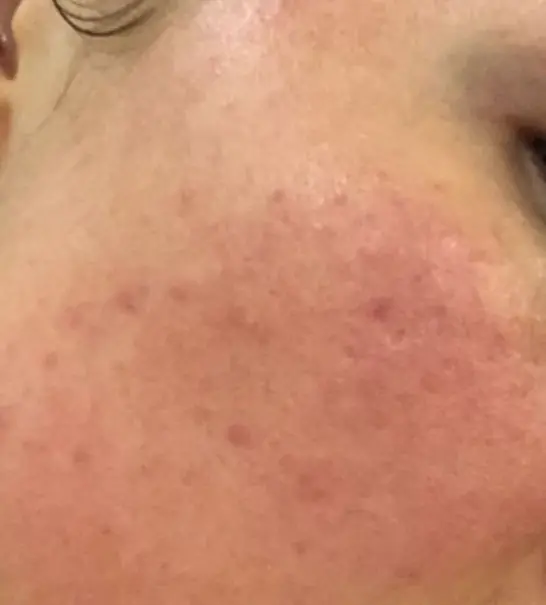
The cosmetologist who performed the procedure recommended using hormonal ointment 2 times a day for 5–10 days. The rash disappeared but reappeared as soon as the patient stopped using the drug.
During the medical history, it turned out that a month before the retinoic peeling, the patient underwent a median glycolic peeling procedure.
Retinoic dermatitis
The cosmetic procedures carried out thinned the epidermis, and the regenerative capabilities of the patient’s skin weakened. As a result, retinoic dermatitis, which can develop after retinoic peeling, was more pronounced in this situation.
It should be noted that the use of topical and systemic glucocorticosteroids is appropriate only for retinoic dermatitis, which occurs with disturbances in the general condition of the body: increased body temperature, erythroderma. In other cases, their prescription, and then cancellation, can lead to the development of even more pronounced retinoic dermatitis.
Therapy
As a result of the examination, the patient was prescribed therapy aimed at relieving the symptoms of retinoic dermatitis.
- Take an antihistamine once a day, at night, for 10 days to relieve itching.
- Take enterosorbents - 1 dessert spoon once a day between breakfast and lunch for 10 days.
- Apply a thin layer of zinc paste to areas of skin with manifestations of retinoic dermatitis once a day, at night, for 5 days.
- Apply the softening emulsion to areas of skin with manifestations of retinoic dermatitis 2 times a day for 2 weeks.
In 2 weeks
Two weeks later the patient came for examination. Manifestations of retinoic dermatitis have regressed. The itching has stopped. The patient was satisfied with the result of the treatment.
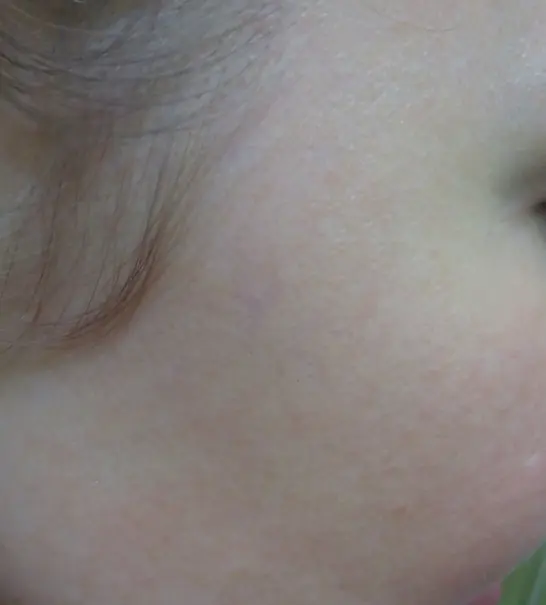
I recommended that she use sunscreen for 1 month and not exfoliate before 3 months. In addition, the patient was strongly advised not to use hormonal ointments without consulting a dermatologist.
Retinoic peeling often leads to manifestations of retinoic dermatitis. Therefore, when performing such a procedure, it is necessary to warn the patient about a possible adverse reaction and give recommendations for skin care.
If the patient needs several retinoic peeling procedures, but after the first procedure severe retinoic dermatitis appears, then subsequent peeling procedures can be replaced by daily application of the Retasol ® solution for 7–10 days, with breaks between courses of 1 month, but not more than 3 courses in a row and only in winter.
Patients will thank you!
Anna Vyacheslavovna Karpova, Employee of the Scientific Dermatological Center "Retinoids", Ph.D. honey. Sciences, assistant at the Department of Dermatovenereology and Cosmetology, Federal Scientific and Medical Education, RUDN University
Ask a question or leave a comment
Oleg | 13.04.2018 16:48
Why use enterosorbents in this case?
Hello, Oleg!
The task of enterosorbents is to bind and remove immune complexes from the body and general adsorption.
Cosmetologists divide complications after peeling into two types: expected (predictable) and unexpected. Expected complications are a natural reaction of the skin to the impact suffered; with proper care, they will pass without a trace. But there are times when the situation gets out of control and in addition to care, the skin needs additional treatment.
Expected Side Effects
Peeling is an effective way to transform the skin in a short period of time. Exposing the skin to chemicals, lasers, ultrasound, or other factors removes dead cells from the skin. This process stimulates active renewal of the integument, accelerates the division of skin cells and the synthesis of its own collagen.
After peeling, the skin looks refreshed and healthy for a reason. Dead cells accumulate over time, grouping into keratinized layers, and prevent the skin from breathing and the supply of nutritional components from skincare products. These difficulties affect the condition of the integument, slow down the functioning of cells and reduce their resistance to environmental factors.
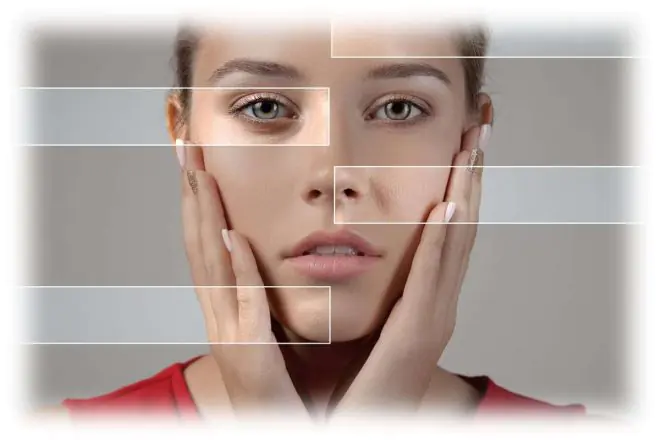
In the hope of an instant transformation, after peeling, redness and peeling appear on the face. How to react to such troubles?
Among the expected side effects from the effect on the skin, cosmetologists identified:
- development of erythema or severe redness of the epidermis;
- mild to moderate swelling;
- peeling of the surface layers of the skin;
- local darkening of skin areas;
- increasing the sensitivity of areas subject to peeling.
Each of the expected complications (side effects) does not require strong experiences. Properly organized, high-quality care during the rehabilitation period guarantees their rapid completion. No additional measures need to be taken.
Let's look at the predicted complications from peeling in more detail.
Erythema
Redness of the area of skin that was peeled is called erythema. Its intensity depends on the aggressiveness of the active exfoliant, the duration of its effect and the sensitivity of the skin.
Superficial peels using fruit acids cause mild and transient redness that will last several hours. But for the Jessner cleansing procedure, the effect will be more pronounced and last up to two days.
For those who dare to undergo moderate acid exfoliations, where the concentration of active acid exceeds 30%, you should prepare for severe erythema for 3-5 days. If we talk about deep cleansing and dermabrasion, then you will observe the “purple face” effect for a longer period of time, perhaps even up to 1 month.
Edema
Swelling is another common side effect of chemical or mechanical effects on the sensitive fibers of the epidermis. Swelling is caused by increased permeability of small blood vessels located in the treated area. The fluid released from them accumulates and provokes swelling. Often, swelling is characteristic of sensitive areas on the face, such as the periorbital area or neck.
Swelling does not appear immediately, but 1–3 days after exfoliation. This defect is typical for exfoliation with trichloroacetic acid (TCA) or medium retinoic peeling.
You can avoid the appearance of swelling after a chemical peel if you choose the right concentration of the acid used. Only an experienced and highly qualified cosmetologist can do this.
Peeling
Any peeling is accompanied by peeling - this is the main sign of skin renewal. The more intense the regeneration and the larger the area that has been cleansed, the stronger the peeling. For chemical peels, peeling is considered a mandatory post-peeling phenomenon.
The peeling of the epidermis resembles how the skin peels off after a strong tan in the sun. It is accompanied by itching, but scratching, scrubbing, or tearing off loose films from the face is strictly prohibited.
During the period of active peeling, you can speed up the process of tissue restoration. To do this, use cosmetics with wound-healing and moisturizing properties recommended by a cosmetologist.
Darkening of the skin
Complications after chemical peeling in the form of darkened skin areas on the face sometimes cause great concern among patients. However, there is no reason to worry. This is how the areas of the skin that were exposed to the exfoliant are expressed. These are old epidermal cells, they will go away when exfoliated. On average, the complete exfoliation process takes 7–12 days.

Hypersensitivity of the integument
After peeling, many patients complain of increased sensitivity and soreness in the treated area. After peeling, the skin reacts sensitively to cold and heat when washing, and may ache when applying cosmetics. Hypersensitivity of the skin is individual; it can end in 1–2 weeks, and in some cases lasts up to a year.
Reducing the skin barrier during exfoliation significantly reduces the protection of soft tissues from external factors and increases their sensitivity. At the same time, resistance to ultraviolet exposure decreases. That is why cosmetologists strongly recommend applying sunscreen when going outside and performing peelings in late autumn and winter until the epidermis is completely restored. During this period, solar activity subsides, and there is less risk of injury to weakened integuments.
Unpredictable complications
In some cases, during the period of rehabilitation (restoration) of the skin after peeling, patients note the development of unusual complications. There are several reasons for this:
- non-compliance with the instructions of cosmetologists during the rehabilitation period, violation of the rules of care, etc.;
- use of cosmetics with allergic components;
- ignoring contraindications before cleansing;
- individual reaction of the body to the impact suffered against the background of weakened immunity.
The following defects are considered a cause for concern for the patient during the post-peeling period:
- allergy;
- exacerbation of herpes and infectious diseases;
- persistent erythema;
- marble shade on the face;
- hypertrophic, keloid scars;
- the appearance of a demarcation line;
- increased acne.
Please note that unexpected complications after peeling must be immediately treated and eliminated. To do this, it is important to notice the defect in a timely manner and contact a specialist. Self-medication can only make the situation worse.
Allergy
Spotty rashes on the face and body, accompanied by itching, and in the worst case, the appearance of Quincke's edema and breathing problems are signs of an allergic reaction. This is often facilitated by neglecting to test for allergies to the preparations used for peeling and skin care after cleansing.
For mild allergies, taking antihistamines is sufficient. If the allergic reaction worsens and interferes with breathing, severe swelling appears, hospitalization and intensive care cannot be avoided.
Exacerbation of herpes
The appearance of herpes rashes on the face after peeling threatens with residual scars. The only option to get rid of them is to use ointments and medications against herpes.
For medium and deep peeling, taking antiviral drugs is included in the pre-peel preparation requirements. In the first days after cleansing, taking such drugs is also recommended, because exfoliation weakens the immunity of epidermal cells and increases the risk of infection.
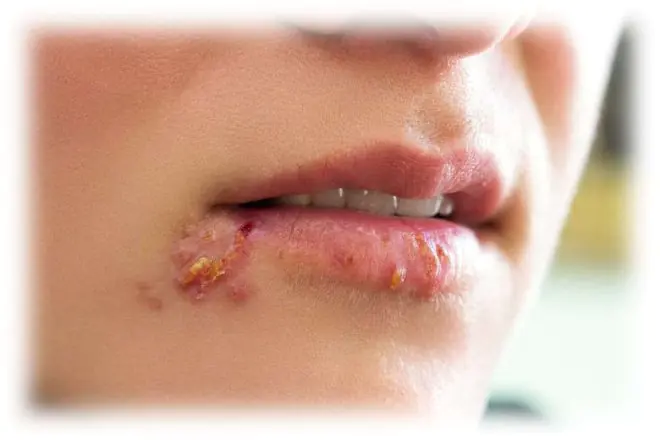
Persistent erythema
If the patient has the beginnings of rosacea or a tendency to develop this disease, the chance of prolonged severe erythema increases. As a rule, such a complication is observed after deep exposure.
The defect persists for up to a year. During this period, you cannot visit saunas, baths, and you will have to avoid eating spicy foods and alcohol. In order not to provoke increased blood circulation in the facial area, it is recommended to forget about physical activity and sports.
No drugs are prescribed to eliminate the complication; the defect will go away on its own.
Marble shade
Deep peeling or dermabrasion can cause marbling of the skin. This is due to the death of melanocytes. For those with fair skin, this defect is less noticeable. But for dark-skinned patients, hiding it is problematic.
It is very difficult to correct such a defect. Only courses of superficial cleansing can correct your complexion.
Scarring
Keloid and hypertrophic scars are a rare, but most unpleasant complication after peeling. Violation of the technique, the patient's predisposition to scarring of soft tissues can provoke the appearance of this defect. It is not always possible to fix it.
To correct rough scars, cosmetology suggests resorting to laser resurfacing, cryotherapy, and invasive techniques are allowed (steroid injections directly into the scar).
Appearance of the demarcation line
A demarcation line is a clear boundary on the face that separates the part of the face that is subject to exfoliation and the part that was not exfoliated. The deeper the impact, the more contrast the line will be.
This problem is typical for dark-skinned, porous skin. To correct the defect, use Jessner peeling.
Increased acne, acne
After peeling, a rash may appear and acne problems may worsen. This is due to the transfer of infection to healthy areas of the skin, activation of the sebaceous glands, or the use of expired peeling products.
To eliminate the defect, undergo a course of drug treatment. The specialist will prescribe a complex of vitamins that will strengthen the immune system and antibiotics to remove the infection.
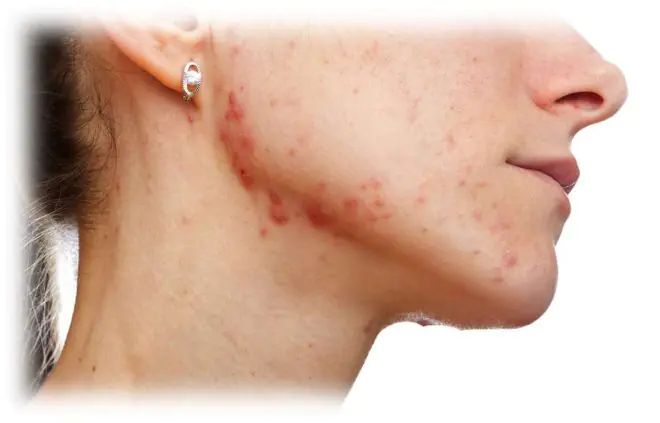
How to prevent unpleasant defects
To protect yourself as much as possible from unpleasant consequences after peeling, follow these recommendations:
- Be very responsible when choosing a clinic or beauty salon. Ask the cosmetologist to present certificates for the drugs used and permission to perform this type of procedure. Study customer reviews, listen to the opinions of relatives and friends who have used such services.
- If you decide to cleanse your face at home, carefully study the peeling techniques and how to behave before and after the procedure.
- Follow your cosmetologist's instructions carefully to prepare for peeling.
- Choose a cleansing method taking into account the individual characteristics of the body and previous diseases. If there are contraindications, refuse the procedure.
- Before cleaning, perform a drug susceptibility test. If unusual irritation or allergies occur, use of the product is prohibited.
- After peeling, use hypoallergenic cosmetics until the skin is completely restored.
- Do not touch your face with dirty hands after cleansing. In most cases, cosmetologists recommend not even contacting water in the first days. For example, after a deep phenol peeling, the patient even drinks through a straw for the first 24 hours.
- Put aside decorative cosmetics until the skin is completely restored.
- Taking hormonal drugs increases the risk of complications. Be sure to warn your cosmetologist about this fact.
- To prevent the development of pigmentation on the face, regularly apply a sunscreen with a high degree of ultraviolet protection.
- During the rehabilitation period, visiting a sauna, bathhouse, or swimming pool is contraindicated. Put off tanning and sun treatments.
- At the slightest suspicion of a complication, contact a specialist. Do not self-medicate or use traditional medicine, so as not to harm yourself and aggravate the situation.
Remember, in most cases, the cause of complications after peeling is the cosmetologist’s own irresponsibility and low professionalism.
Peeling is cleansing, rejuvenating and treating the skin, but only in skillful hands. Otherwise, you may experience unpleasant scars, acne, and other complications after peeling. Treat cosmetic procedures responsibly - and clean, perfect skin without scars and residual effects is guaranteed!



